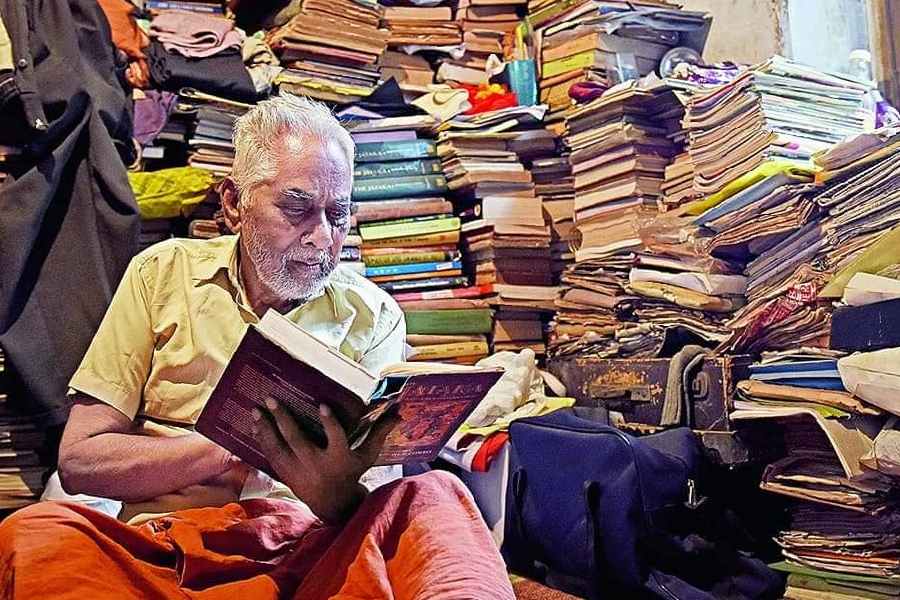Parameswaran Thankappan Nair, who came to Calcutta with a petty job and made his passion for the city his lifelong pursuit, passed away in his native Kerala on Tuesday afternoon.
He was 91 and is survived by his wife, a son and a daughter.
Nair was unwell for the past six months, his son Manoj Nair said over the phone from Chendamangalam in Kerala’s Ernakulam district. “He passed away at home. He was suffering from age-related ailments for the past six months,” Manoj said.
Fondly called Nair-da, Nair-babu or PT, he earned the epithet of “barefoot historian” of Calcutta because he went around and documented stories about various aspects of the city — its social life, police, institutions, communities and even roads.
Despite not being a professional historian, Nair would be among the few top historians to have worked on Calcutta, said historian Suranjan Das.
Nair was not just a historian. “He also captured the soul and spirit of Calcutta that very few others were able to do,” said Das, a former vice-chancellor of Calcutta University and Jadavpur University.
Some of his books are the most authentic sources of information on Calcutta.
Nair first arrived in the city in 1955 and started working as a stenotypist in a Dalhousie Square office. Son Manoj said Nair had worked with the Anthropological Survey of India and then freelanced and edited a publication.
Nair’s book A History of Calcutta’s Streets is among his more popular works and is widely consulted by historians, heritage experts and enthusiasts, writers and even government babus. He wrote on these subjects at a time few would write on them.
Some of his other books were about south Indians in Calcutta, the origins of Calcutta police and a biography of B.S. Kesavan, the first librarian of National Library.
“He came back to Kerala in 2018. Between then and when he fell ill six months back, he would follow what was happening in Calcutta. He continued to read a lot and would often cut and collect newspaper clippings of news from Calcutta,” Manoj said.
“My father never used a mobile phone or a computer.”
In Calcutta, Nair lived in a rented place in Bhowanipore’s Kansaripara. He had two rooms on the ground floor of a two-storey building.
“Nair handed over more than 8,000 books from his collection to the Kolkata Municipal Corporation in 1999-2000. The corporation paid him Rs 10 lakh for the books. He had a wonderful collection of books on Calcutta, history and law,” said Sasanka Banerjee, assistant director of Kolkata Museum at Town Hall, who was closely associated with Nair.











